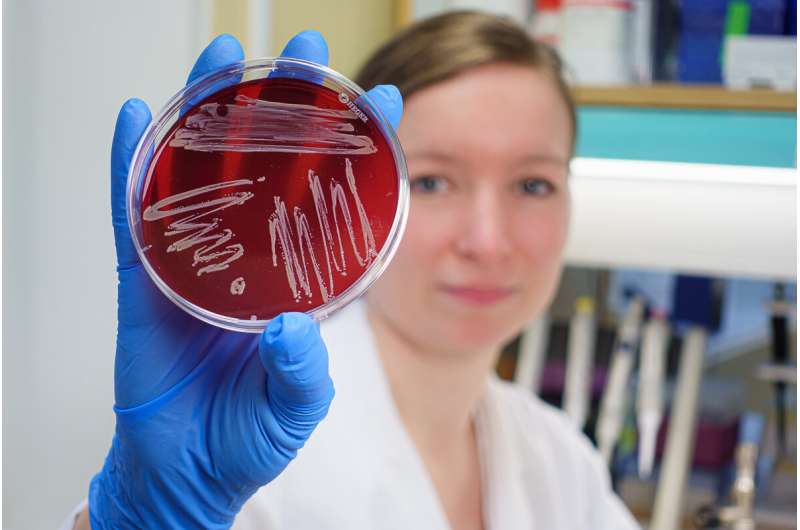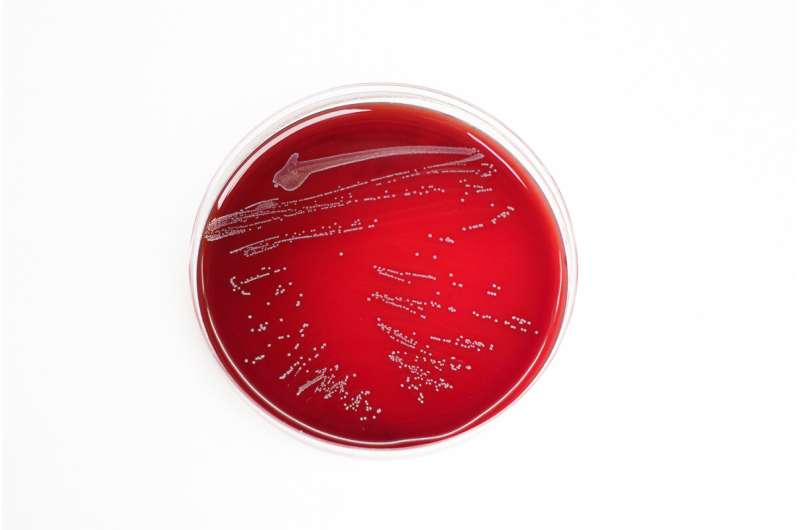This article has been reviewed according to Science X's editorial process and policies. Editors have highlighted the following attributes while ensuring the content's credibility:
fact-checked
peer-reviewed publication
proofread
The perils of bacteria's secret weapons

Did you know that bacteria can hide their antimicrobial resistance? Much like storing military defense equipment without revealing it to the enemy, bacteria can mask their ability to resist antimicrobials. This hidden antimicrobial resistance can pass under the radar and cause treatment failure in patients.
A recent study published by researchers at UiT The Arctic University of Norway sheds light on this "hidden resistance". The researchers describe that this phenomenon is often so rare that you cannot detect it through traditional testing methods, such as growing the bacteria in a Petri dish. However, when the bacteria are exposed to antimicrobial drugs during therapy, they can activate their hidden defensive equipment, rendering the patient's treatment ineffective.
Furthermore, bacteria can share their antimicrobial resistance abilities with other bacteria, leading to the emergence of drug-resistant strains that threaten public health. It is as if they conspire against us in a secret brotherhood.
Such bacteria are not only a scary idea to contemplate. They actually keep popping up in many places around the world.
The secret of the bacteria
Detecting bacteria that carry hidden weapons can be a daunting task for even the most skilled laboratory technicians. Only one in a million bacteria carry these hidden weapons, making it akin to searching for a needle in a haystack.
On the other hand, we typically use "only" ten thousand bacteria to do an observable traits test, a so-called phenotypic test in the laboratory, where we grow the bacteria in a petri dish. But we would have to use a million bacteria to find the one with the secret super weapon.
You might think that it is not such a big problem when only so few bacteria carry hidden weapons. However, when you have an infection the number of bacteria multiplies rapidly, and soon there are more than a billion bacteria.
At that point, quite a few bacteria have hidden weapons against antimicrobials. And still, they have yet another trick up their sleeve…

Whispering down the lane
When the bacteria notice that they are threatened by antimicrobials, they bring out their secret weapons and ruin the effect of the medicine. But they can also share their blueprint of how to make these weapons with other bacteria. They make numerous copies of the blueprint and share it with their mates around them.
The result is that even more bacteria are now suddenly able to equip themselves with secret weapons. And the patient is not recovering from the infection.
DNA—the secret storage
What can we do to detect and prevent the spread of such deceitful and dangerous bacteria? Most important of course is that you, as the reader of this article, only use antimicrobials when you need them. Secondly, in the laboratory we can combine traditional observable traits methods with methods looking at the genetic information of bacteria.
With methods such as PCR and genomic sequencing, we can peer at the innermost secrets of the bacteria. More specifically, we can have a look at their nucleic acids.
At the gene level, even bacteria can no longer hide their secret weapons blueprints.
Double testing
In Denmark and Canada, strains of enterococci with a hidden resistance capability managed to spread rapidly and cause disease outbreaks in hospitals. In Norway and Sweden, early detection, and more widespread use of genetic analysis of the Enterococcus' DNA has so far prevented the spread of bacteria with hidden resistance.
In the next few years, we expect to find even more hidden resistance in bacteria. This means that hospitals and research communities must be alert and update methods to detect bacteria's secret weapons, and their blueprints. Since we can only look for bacterial weapons that we already know about, we must continue research on other, and perhaps totally different defenses, that the bacteria have hidden away and that we still do not know about.
The study is published in the Journal of Antimicrobial Chemotherapy.
More information: Theresa Maria Wagner et al, Transiently silent acquired antimicrobial resistance: an emerging challenge in susceptibility testing, Journal of Antimicrobial Chemotherapy (2023). DOI: 10.1093/jac/dkad024
Journal information: Journal of Antimicrobial Chemotherapy
Provided by UiT The Arctic University of Norway





















